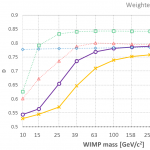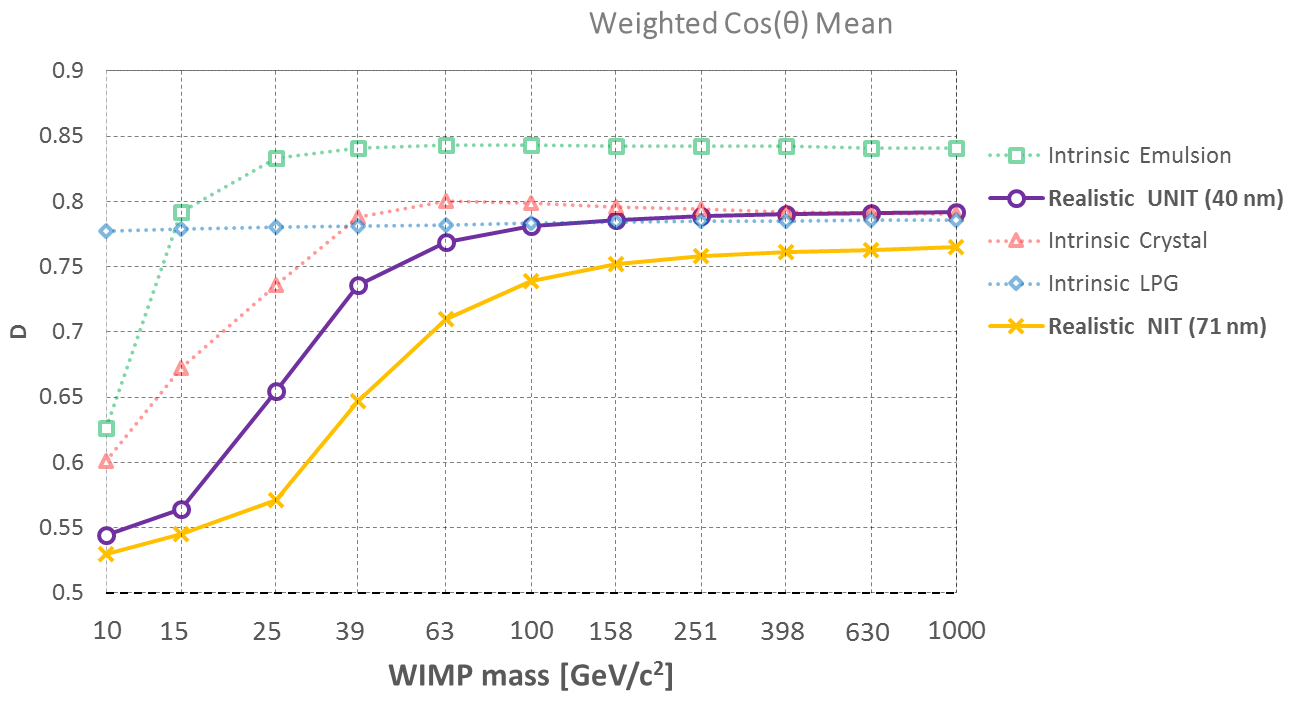Paper of the month: Directionality preservation of nuclear recoils in an emulsion detector for directional dark matter search

March 23, 2021 by RebecaBV
(arxiv:2102.03125)
Report by Federica Pompa (UVEG ESR) and Valentina Montoya (UHEI ESR)
Directional detection of dark matter (DM) is a strategy pursued in the design of next-generation detectors. Based on the expected anisotropy of the signal from the DM, this strategy offers a unique opportunity to identify interactions of so-called Weakly Interacting Massive Particles (WIMPs), reliably even in the presence of unrecoverable background events. In fact, while non-directional detection is mainly limited by non-reducible background due to neutrons and neutrinos, directional detection allows to distinguish this from the anisotropic DM signal.
Different detector types have been proposed to perform the directional DM search. Beside the crystal detectors and the low pressure gas (LPG) detectors, of relevant importance are the emulsion detectors [1]: these are composed by a nuclear emulsion made of AgBr crystals dipped into a gel. The crystals act as sensors that are activated by the ionization loss of a passing-through charged particle. Thus, a particle track is recorded, first as a sequence of activated crystals, which later, after the development, becomes a sequence of silver nanoparticles, called grains. Their dimension depends on the emulsion type: about 44nm for the Nano-Imaging Tracker (NIT) and 25nm for the Ultra-NIT (UNIT). The average distance between crystals defines the granularity of the emulsion detector and, hence, the minimal track length with measurable direction: typical average distance between crystals is about 71nm in a NIT, while is about 40nm in a UNIT.
In this paper, all the possible recoil atoms and the realistic energy spectrum corresponding to each detector type were considered (LPG detector, crystal scintillators, NIT and UNIT emulsion). Combining all the possible recoiling atoms with realistic energies, the authors provide the evaluation of nuclear emulsion performance as a directional-sensitive DM detector, focusing in the mass range from 1 GeV/c2 to 1 TeV/c2.
By using the SRIM simulations tool [2], recoil tracks in each detector material have been simulated (see Figure 1 from [3]). The estimation of how well the directional information is kept in different materials can be quantified by introducing the parameter D, expressing the mean weighted-cosθ distribution and defined as

where θi is the angle between the initial direction of the recoil and the direction after the i-th collision, ΔEi the energy deposited in the recoil and Ncoll is the total collisions number. D measures the mean direction of the track compared to the primary direction of the recoil. As the event rate for heavy atoms increases with the WIMP mass, their relative contribution to the overall detector performance also increases, thus improving the overall performance. Their contribution becomes dominant at about 25 GeV/c2, saturating the detector performance.
Neglecting the granularity of the detector, at higher WIMPs masses, both emulsion and crystal detectors surpass the performance of the LPG one (Figure 2): above 25 GeV/c2 the intrinsic mean weighted-cosθ of the emulsion detector is about 5-7% higher than that of both the LPG and crystal detectors, making the emulsion detector an excellent choice for the directional WIMP detection in that mass range.
The granularity effect reduces the performance of both NIT and UNIT emulsion detectors due to a suppression of the contribution from heavy Ag and Br atoms: the directionality preservation performance of the NIT emulsion is less than 5% lower than the intrinsic one of the LPG for WIMP masses above 100 GeV/c2, while the UNIT slightly supersedes the LPG in the same mass range (Figure 2). Application of emulsions with granularities finer than 40nm will further improve the directionality preservation property of emulsion by pushing it closer to the intrinsic limit.

Figure 1: A recoil track simulated with SRIM [3].

Figure 2: D values as a function of the WIMP mass for ideal LPG (blue diamonds), crystal (red triangles) and emulsion (green squares) detectors. Comparison with realistic distributions obtained for NIT (orange crosses) and UNIT (violet circles) emulsions is represented.
References:
[1] Aleksandrov, A. et al, NEWS: Nuclear Emulsions for WIMP Search, LNGS-LOI 48/15 (2016) 1–50. arxiv:1604.04199.
[2] J. F. Ziegler, M. D. Ziegler and J. P. Biersack, SRIM - the stopping and range of ions in matter (2010), Nuclear Instruments and Methods in Physics Research Section B: Beam Interactions with Materials and Atoms 268 1818–1823.
[3] C. Couturier et al, Dark matter directional detection: comparison of the track direction determination., J. Cosmol. Astropart. Phys 01 (2017) 027. DOI:10.1088/1475-7516/2017/01/027


